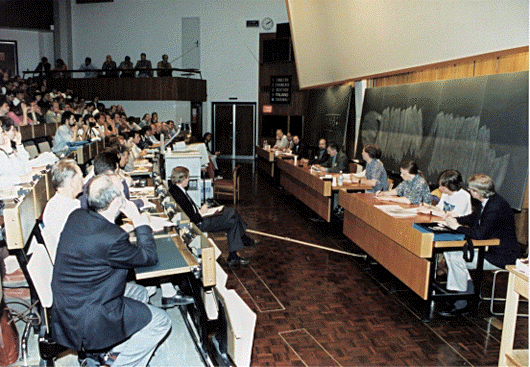
A short post this, to remind that today is officially the 25th birthday of the World-Wide-Web, in March 1989. It took five years for a conference around the theme to be organised and below is a photo from that event. (C) CERN Photo From my perspective and perhaps from the 200 or so others present at that closing session, I went back home and told my young children that the world had changed that week. So it has.
